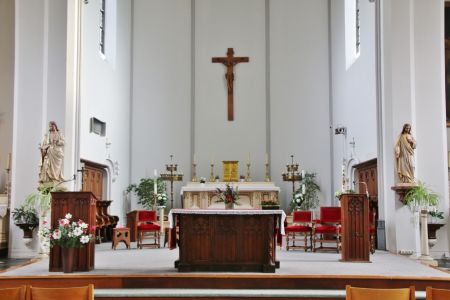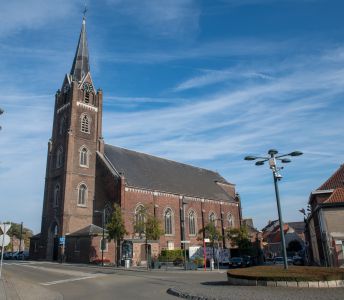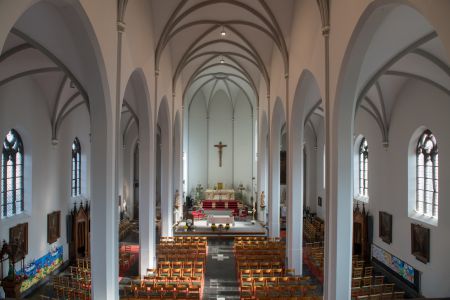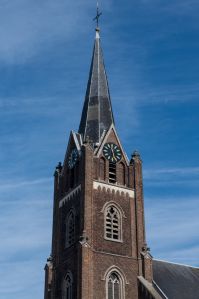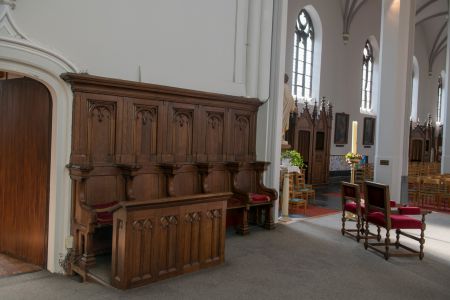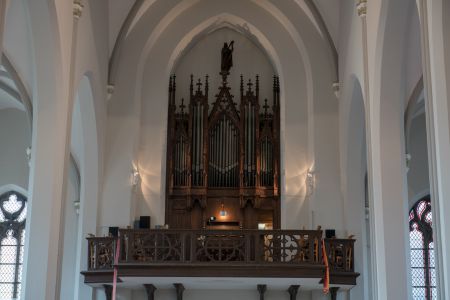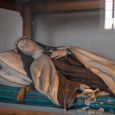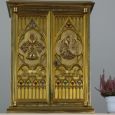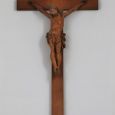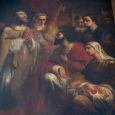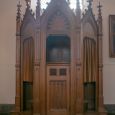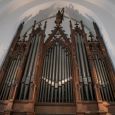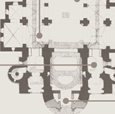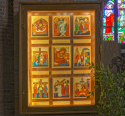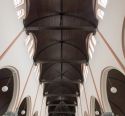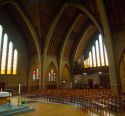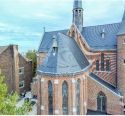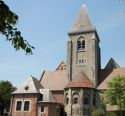Church | 1864 | Neogothic | Catholic Church




Map
Opening hours
01 January - 31 December
Mon 8.30 - 17.00
Tue 8.30 - 17.00
Wed 8.30 - 17.00
Thu 8.30 - 17.00
Fri 8.30 - 17.00
Sat 8.30 - 18.15
Sun 8.30 - 17.00
Guided tour
Religious offices
Wednesday 9 am
Saturday 4.45 pm
Sunday 11.15 am
Description
The Neo-Gothic building, designed by the architect Pierre Croquison ,is from the mid-19th century. The interior which was repainted and refreshed in 2014 gives a fine, delightful impression of welcome. Especially noteworthy is an interesting painting showing the baptism of the son of King Dagobert by the parish’s patron, Saint Amand ,which is above the altar in the right lateral.
There is a recumbent statue of Saint Teresa of Lisieux beneath a reliquary. Also worth seeing are the crucified Christ, the brass tabernacle in the choir and the organs.
KIKIRPA : Photo-library online
Photos
Remarkable elements
The shrine of Saint Teresa of the Child Jesus
To fulfil a promise of gratitude, the lying of Saint Theresa was bought from the carmel of Lisieux (FR) in 1923 by the Bonnave-Dubar family. This statue had been used for the translation of the relics of Blessed Therese Martin, a Carmelite nun. After the authorization of the Sacred Congregation of Rites, the statue was placed in the shrine in June 1924.
Tabernacle
In a neo-Gothic style, made of painted wood and brass, decorated with gems, the tabernacle is decorated with a chalice surmounted by the host and a pelican feeding its young. It was provided in 1852 by the Delahousse house in Kortrijk, donated by Juste Doutreluingne.
The statue of Christ in the choir
It is an old Christ statue in perewood that for a long time had been located in the attic of a farm of the parish. Around 1953, this old cross was planted at the top of a street in the village. On the advice of the then parish priest, the statue of Christ was restored by Paul Pillyser and placed on a new cross above the main altar on the occasion of the parish mission in 1963.
Saint Amandus recalls the exile and baptizes the son of King Dagobert
At the beginning of Belgian Independence, and in order to promote the Fine Arts, the municipalities were asked to pay a contribution of 10 francs, which was concluded with a national lottery. The 1844 draw indicated Luingne as the winner, who won a painting whose theme could be chosen. A scene from the life of Saint Amandus, patron of the parish, was chosen.
In the absence of the necessary space, the municipality donated the painting (3.5m x 2.5m) by Bruno Van Hollebecq to the church wardens. Nowadays the canvas hangs above the side altar, dedicated to the patron saint of the parish.
Translated with www.DeepL.com/Translator
Confessionals
In neo-Gothic style, they were designed by the church's architect, Pierre Croquison. Two of them were placed opposite each other in each of the side naves as early as the 19th century. The third confessional, similar to the first two, came a little later. A "foreign" confessor had to be called upon to help the local clergy.
Organ
They were placed on the balcony in 1863 by Hooghuis of Bruges. The buffet is in Gothic style with a statue of David, king of Israel, playing the harp. These organs, whose bellows were electrified in 1927, are appreciated by connoisseurs, the acoustics of the church being excellent.


